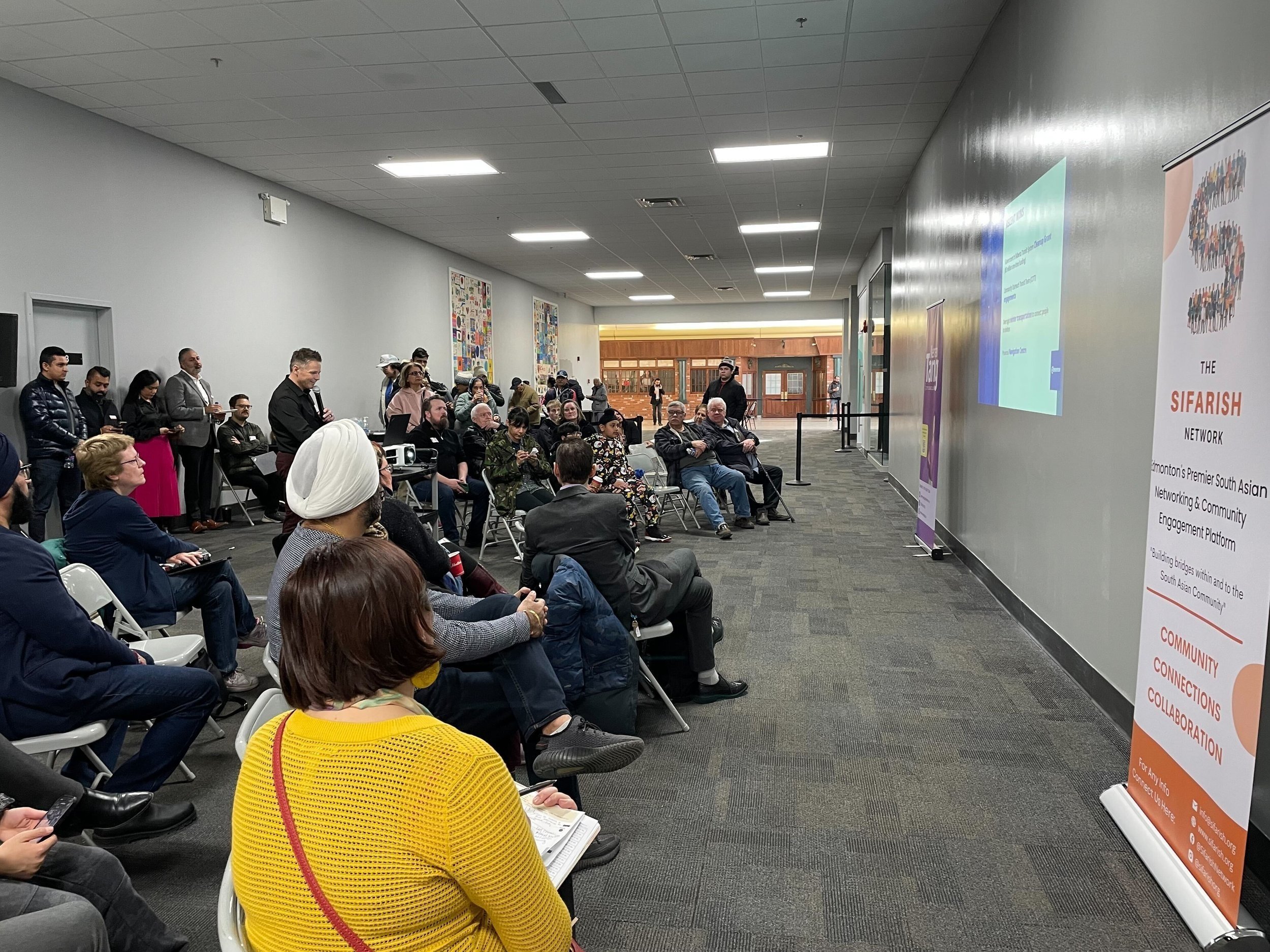Recap: Transit Safety and Security Forum (Feb 2024)
Thank you to everyone who joined our Transit Safety and Security forum this weekend. The event, which included an information session, audience Q&A’s and a Resource Fair, had a great turnout from the community, and kick-started an important conversation that will continue on in Ward Karhiio.
A huge thank you to our partners in planning this first-of-a-kind event: the Sifarish Network, Edmonton Transit Services, Edmonton Police Services, and the Mill Woods Town Centre which hosted us. I also want to shout out the many organizations who jumped at the opportunity to connect with the community, including the Community Outreach Transit Team in partnership with Bent Arrow Traditional Healing Society, TransEd, and the Neighbourhood Empowerment Team. The City takes a multilayered approach to safety and security on transit, so I’m glad to see we were able to bring so many partners together and provide a one-stop connection for community.
Transit in Ward Karhiio
Transit has been a topic that my office hears about a lot - from route planning, to bus shelters, to transit safety. Ward Karhiio saw the opening of the Valley Line SE LRT in November 2023 (which has had a steady growth in ridership). We have also seen a growth in overall transit ridership happening in the Southeast. Providing an affordable, accessible and connected transit system is important as our city continues to grow, and is something that I prioritize in my role. With Mill Woods at the end of the line, a bustling transit hub at the Mill Woods Transit Centre, and investments in bus and On Demand connections for developing Southeast communities, it’s clear that transit is a key priority in Ward Karhiio.
When the Sifarish Network reached out with the idea to bring people together to learn more about transit, dispel misinformation, and help the community access resources to travel safely, it was a great opportunity to move the conversation from City Hall (City Council receives bi-monthly Transit Safety Updates, with the latest one available here) into the community and hear from you about on-the-ground experiences, struggles, and perceptions of transit.
Highlights from the Forum
During the event, we had a presentation from Edmonton Transit Services who delved into the various aspects of transit safety, including the investments the City continues to make to support safe travel. We also talked about the reality of larger social issues cascading into transit spaces - things like the lack of affordable housing, mental health resources, an increase in drug poisoning, and cases of youth and gang violence. All of these are complex challenges that don’t start in transit, but often end up there, and are felt by Edmontinans using transit spaces.
I appreciated that our ETS team and Director of Transit Safety, shared how we are taking an integrated approach to help vulnerable Edmontonians in our transit and public spaces, connecting them to the right resources through COTT. And tackling other disorder or criminal concerns in partnership with EPS and Transit Peace Officers when needed. There is no single solution to solve everything, but our conversation highlighted the significance of collaboration in addressing safety concerns effectively. You can see the PowerPoint slides from the event below.
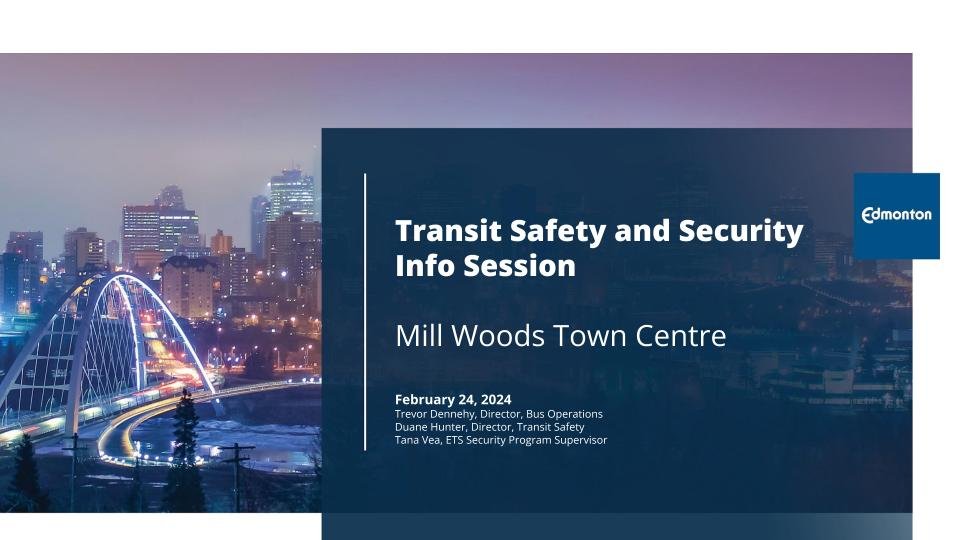
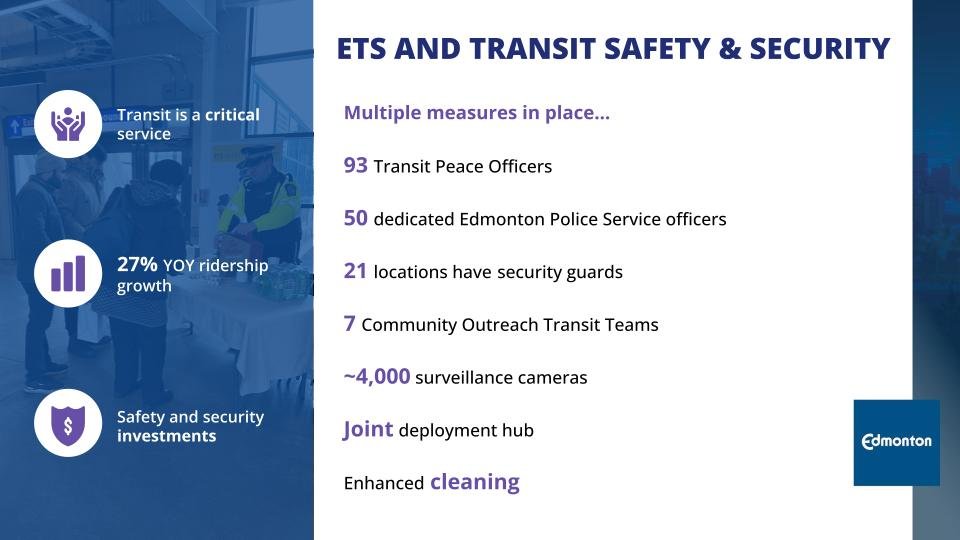
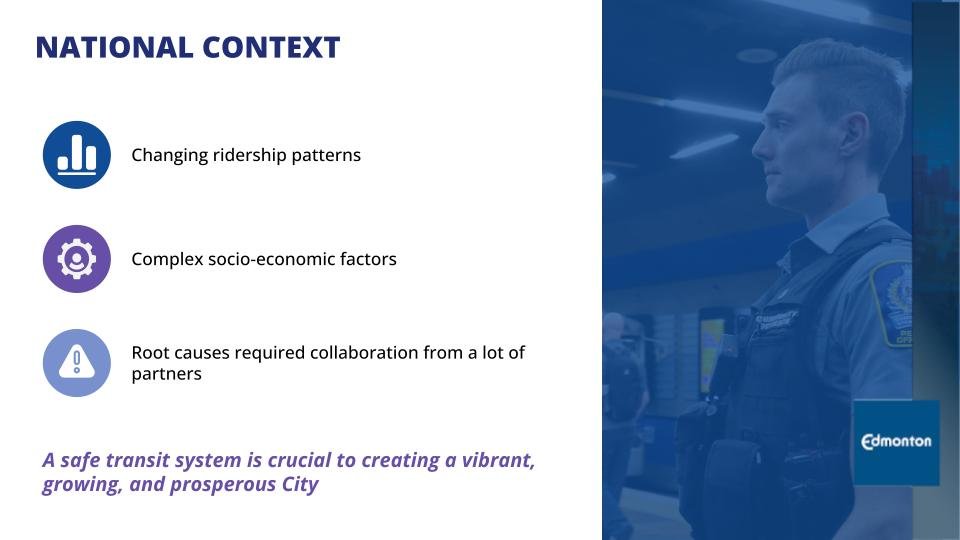
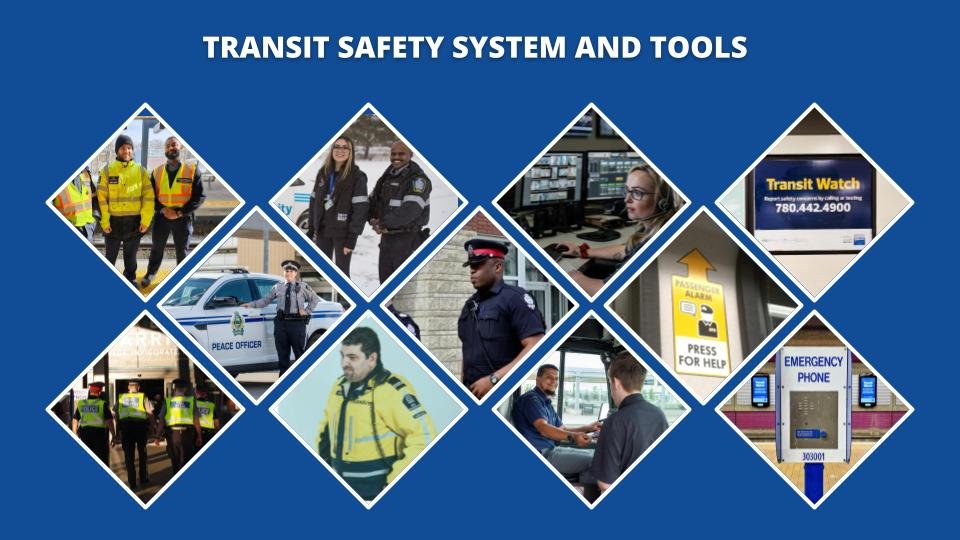
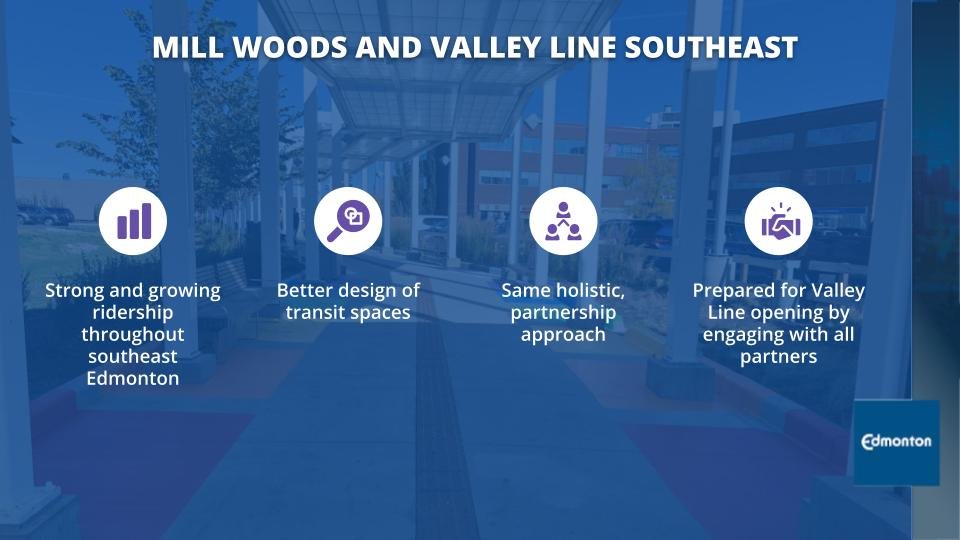
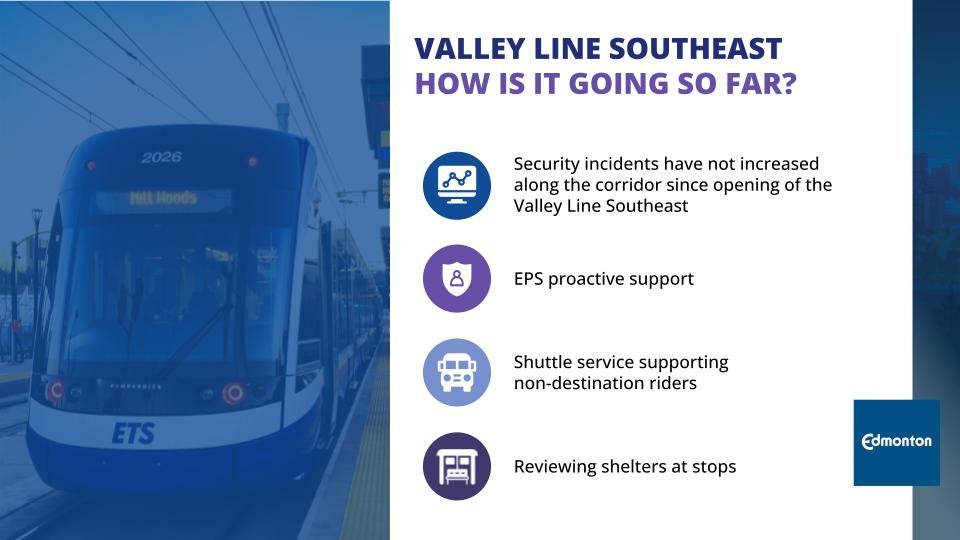
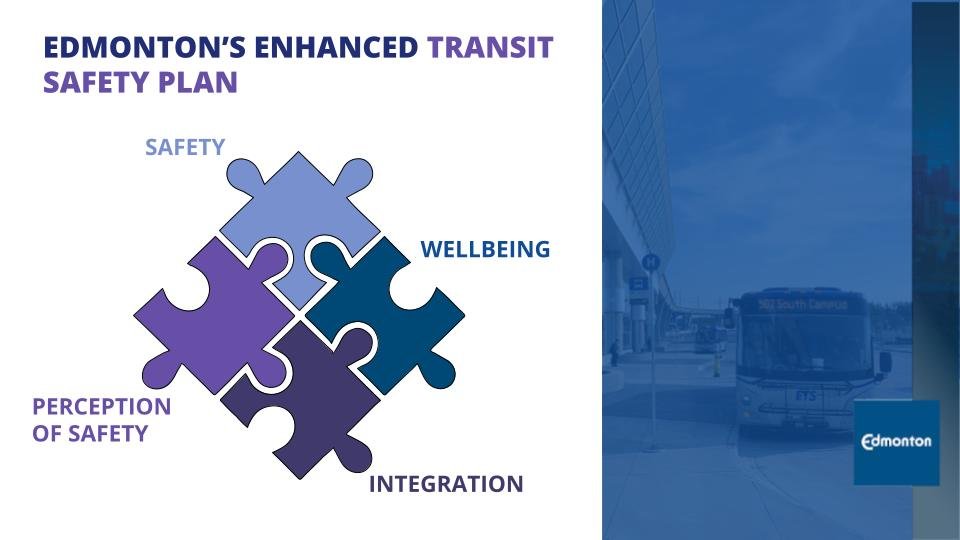
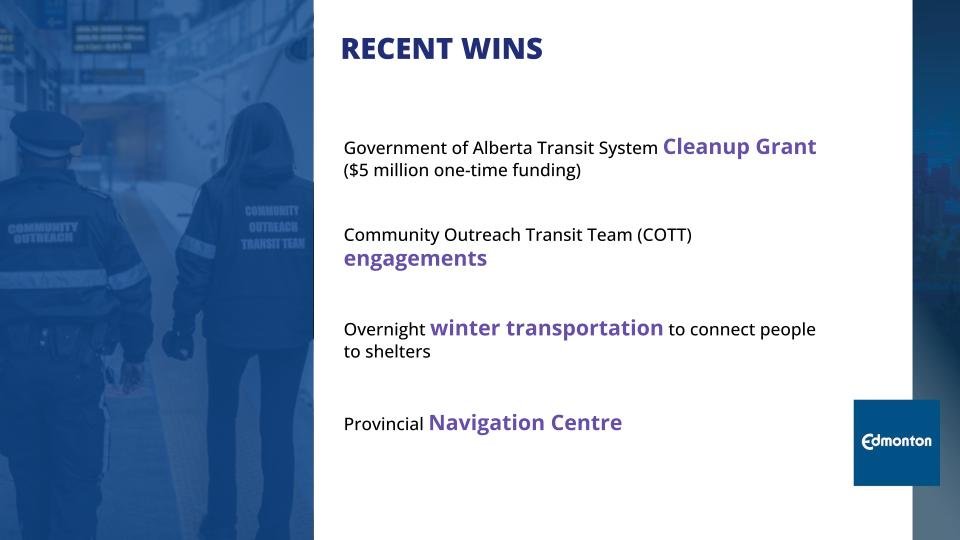
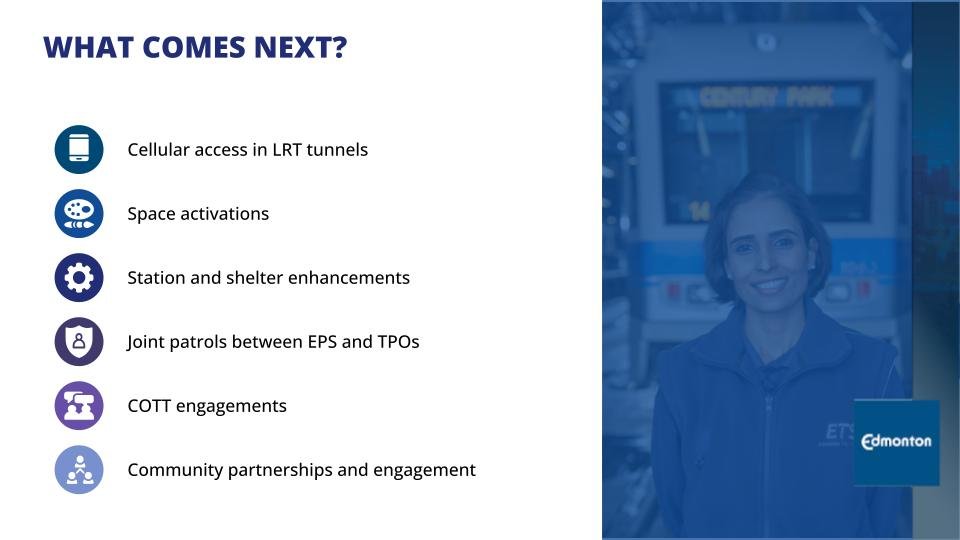
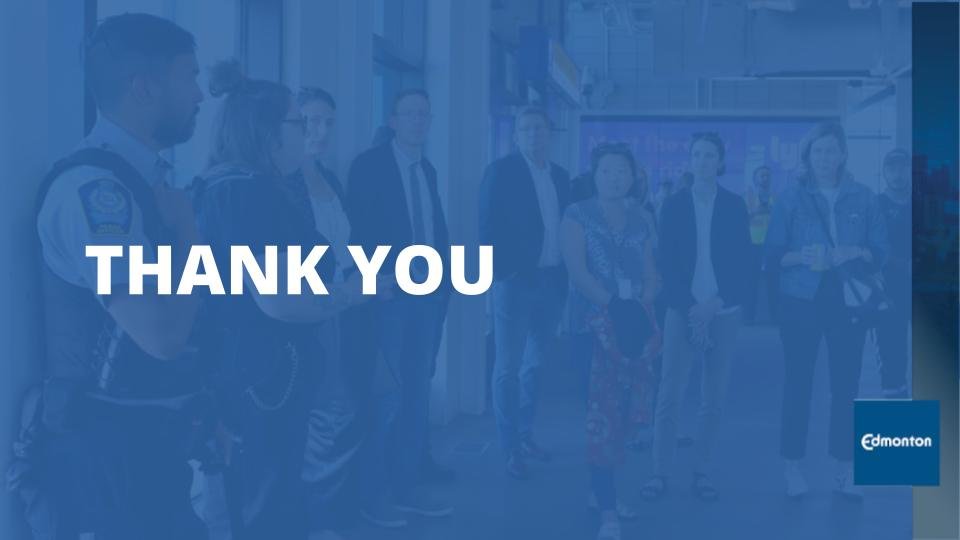
Community Questions
During the Q&A portion of the event, we took questions from participants about transit safety, which also led to some great discussions about the Arc system, and pain points with transit ridership in general. We have noted all questions, and our City teams are following-up on this feedback and how it can be used to improve our systems. If you’re interested, some questions we heard and answered included:
What are some concrete actions that riders can take when experiencing unsafe or frustrating situations in transit spaces?
How are our safety resources, like EPS, Transit Peace Officers, Security Guards, COTT teams deployed, and how are their responses prioritized?
Are there safety and security supports available in the evening, or late at night?
Why aren’t we installing turnstiles for prevention of social disorder in transit spaces?
For the South Asian Community, there are language barriers accessing transit. How are we addressing this?
How can we make the Arc fare system easier to use, particularly for new senior users who find it complicated?
Can we better educate the public about ridership etiquette - e.g. priority seating being for seniors, people with disabilities, or people who are pregnant or travelling with young children?
How are we addressing nuisances in transit spaces or other public spaces like street preachers or people playing music loudly on speakers?
How are we making sure that all riders are paying a fare when accessing transit?
Resources
Our ETS team shared a lot of resources and tools for riders. A few key ones are:
For a discrete method of reporting, transit riders can text or call the Transit Watch phone number 780.442.4900 - our recommendation is to add this number as a contact on your phone for easy access. This goes directly to ETS staff working in the ETS Control Centre, who can dispatch resources as needed. For emergencies, call 911.
There are safety buttons onboard the trains if transit riders see suspicious activity and feel comfortable reporting it.
Transit riders can also use emergency blue phones located throughout the transit system to connect directly with the ETS staff working 24 hours a day/7 days a week.
You can learn more at ETS’s Transit Safety and Security website here: www.edmonton.ca/ets/safety-and-security, including Safety tips, and our City’s Transit Safety Plan.
Moving forward, I hope we can build on the momentum generated by this event. I have great insights I will be bringing to our next City Council update on Transit Safety. I urge you to remain actively engaged in this conversation, and share your experiences, both positive and negative, with my office (email me at keren.tang@edmonton.ca) and our ETS team so we can continue to address the evolving needs, or report them through 311. Thank you for your commitment to transit safety, and together, I know we can create a safer experience for all.



